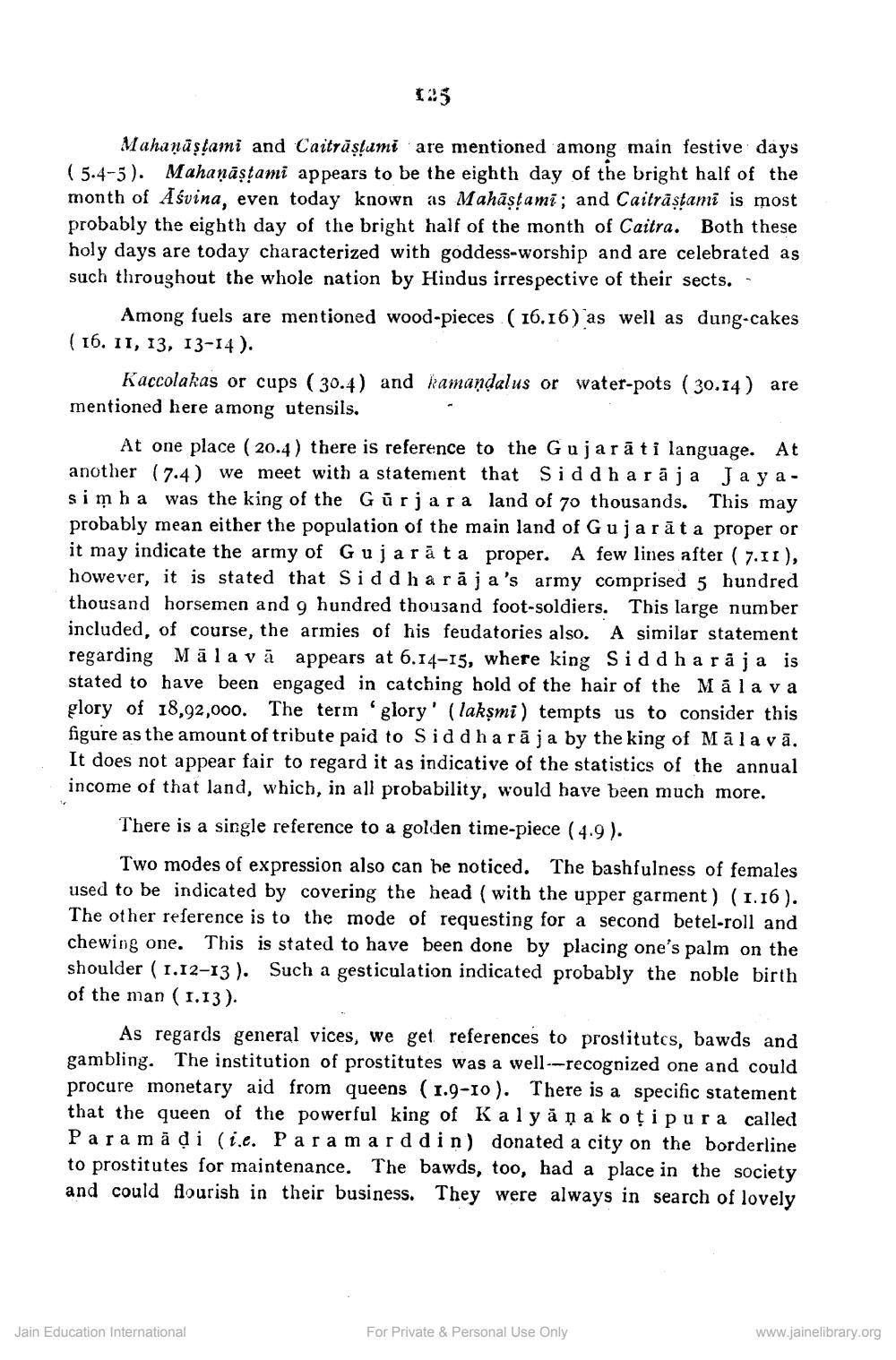________________
Mahaņāştami and Caitrāstumi are mentioned among main festive days (5.4-5). Mahaņāştami appears to be the eighth day of the bright half of the month of Aśvina, even today known as Mahāstami; and Caitrāstami is most probably the eighth day of the bright half of the month of Caitra. Both these holy days are today characterized with goddess-worship and are celebrated as such throughout the whole nation by Hindus irrespective of their sects.
Among fuels are mentioned wood-pieces ( 16.16) as well as dung-cakes ( 16. 11, 13, 13-14).
Kaccolakas or cups ( 30.4) and Kamandalus or water-pots ( 30.14) are mentioned here among utensils.
At one place (20.4) there is reference to the Gujarāti language. At another (74) we meet with a statement that Siddharāja J a y asimha was the king of the Gurjar a land of 70 thousands. This may probably mean either the population of the main land of Gujarāta proper or it may indicate the army of Gujarăta proper. A few lines after ( 7.11), however, it is stated that Siddha räja's army comprised 5 hundred thousand horsemen and 9 hundred thousand foot-soldiers. This large number included, of course, the armies of his feudatories also. A similar statement regarding Māla vā appears at 6.14-15, where king Siddharaja is stated to have been engaged in catching hold of the hair of the Mala v a glory of 18,92,000. The term 'glory' (lakşmi) tempts us to consider this figure as the amount of tribute paid to Siddha rāja by the king of Māla vā. It does not appear fair to regard it as indicative of the statistics of the annual income of that land, which, in all probability, would have been much more.
There is a single reference to a golden time-piece (4.9).
Two modes of expression also can be noticed. The bashfulness of females used to be indicated by covering the head ( with the upper garment) (1.16). The other reference is to the mode of requesting for a second betel-roll and chewing one. This is stated to have been done by placing one's palm on the shoulder (1.12-13). Such a gesticulation indicated probably the noble birth of the man (1.13).
As regards general vices, we get references to prostitutes, bawds and gambling. The institution of prostitutes was a well--recognized one and could procure monetary aid from queens (1.9-10). There is a specific statement that the queen of the powerful king of Kalyäņa koți pura called Para mádi (i.e. Para marddin) donated a city on the borderline to prostitutes for maintenance. The bawds, too, had a place in the society and could nourish in their business. They were always in search of lovely
Jain Education International
For Private & Personal Use Only
www.jainelibrary.org




